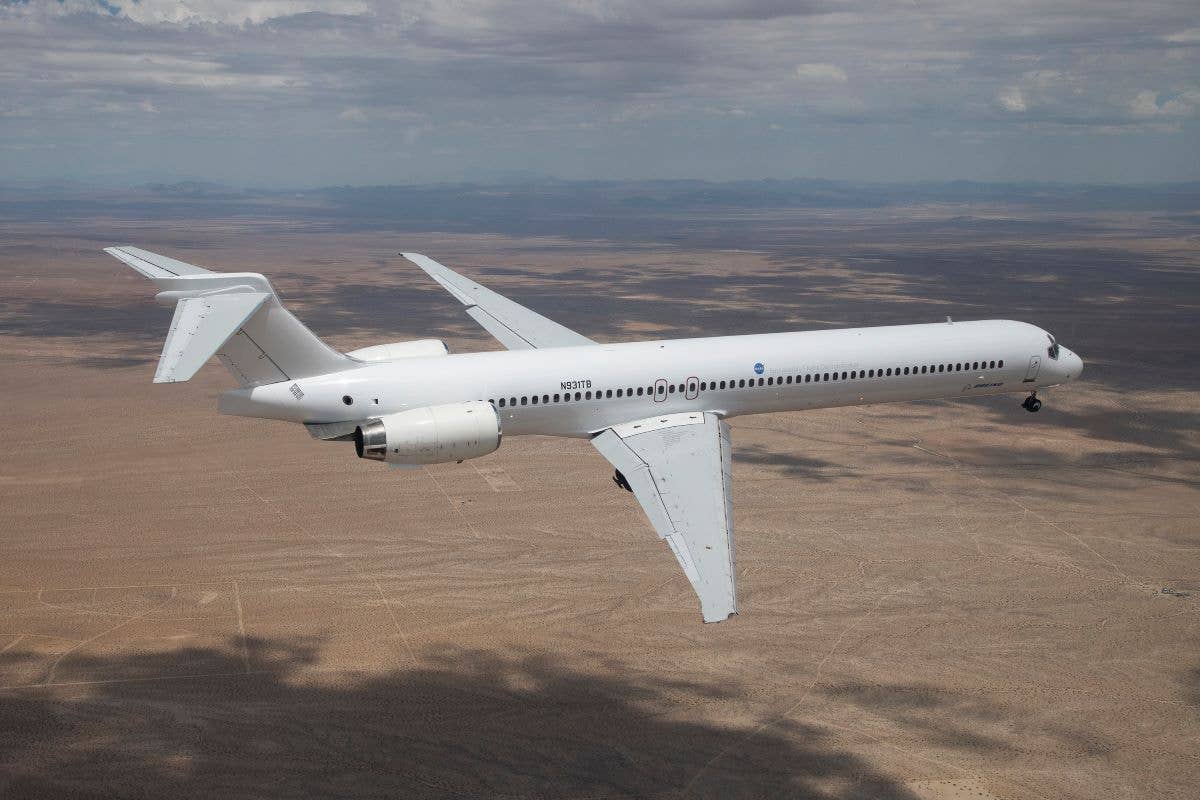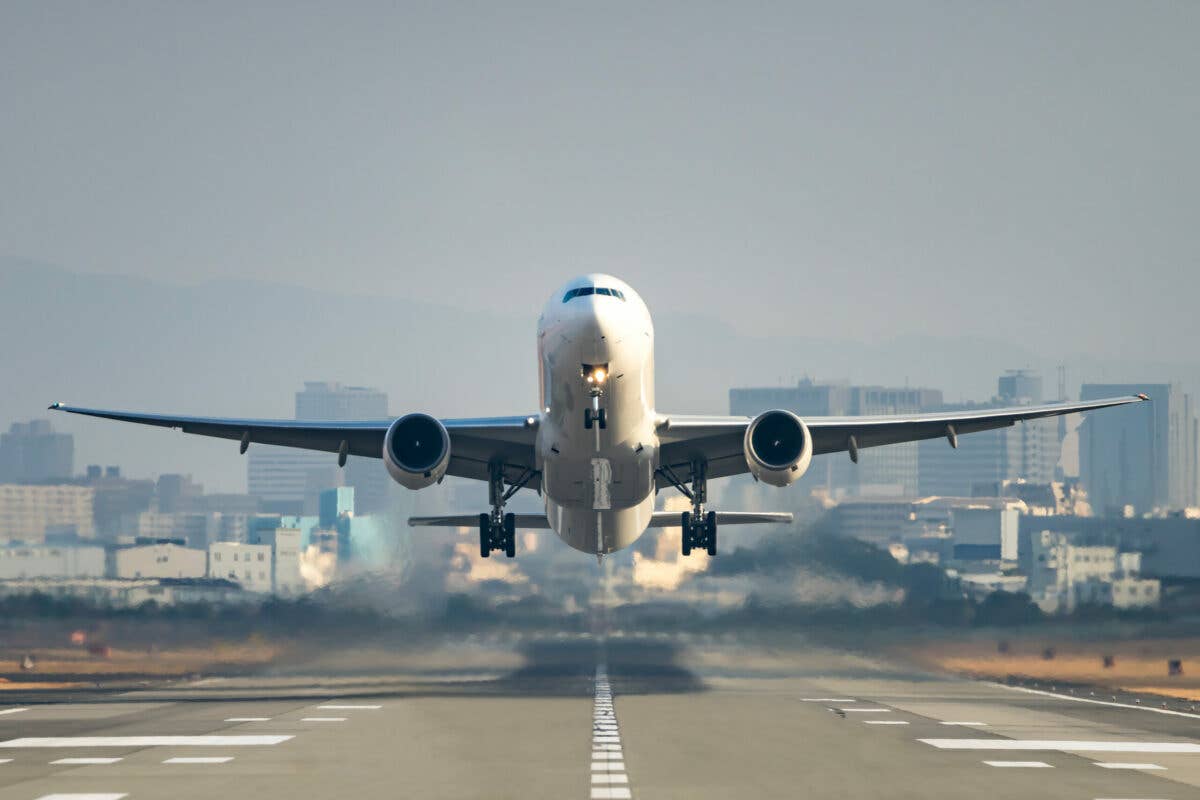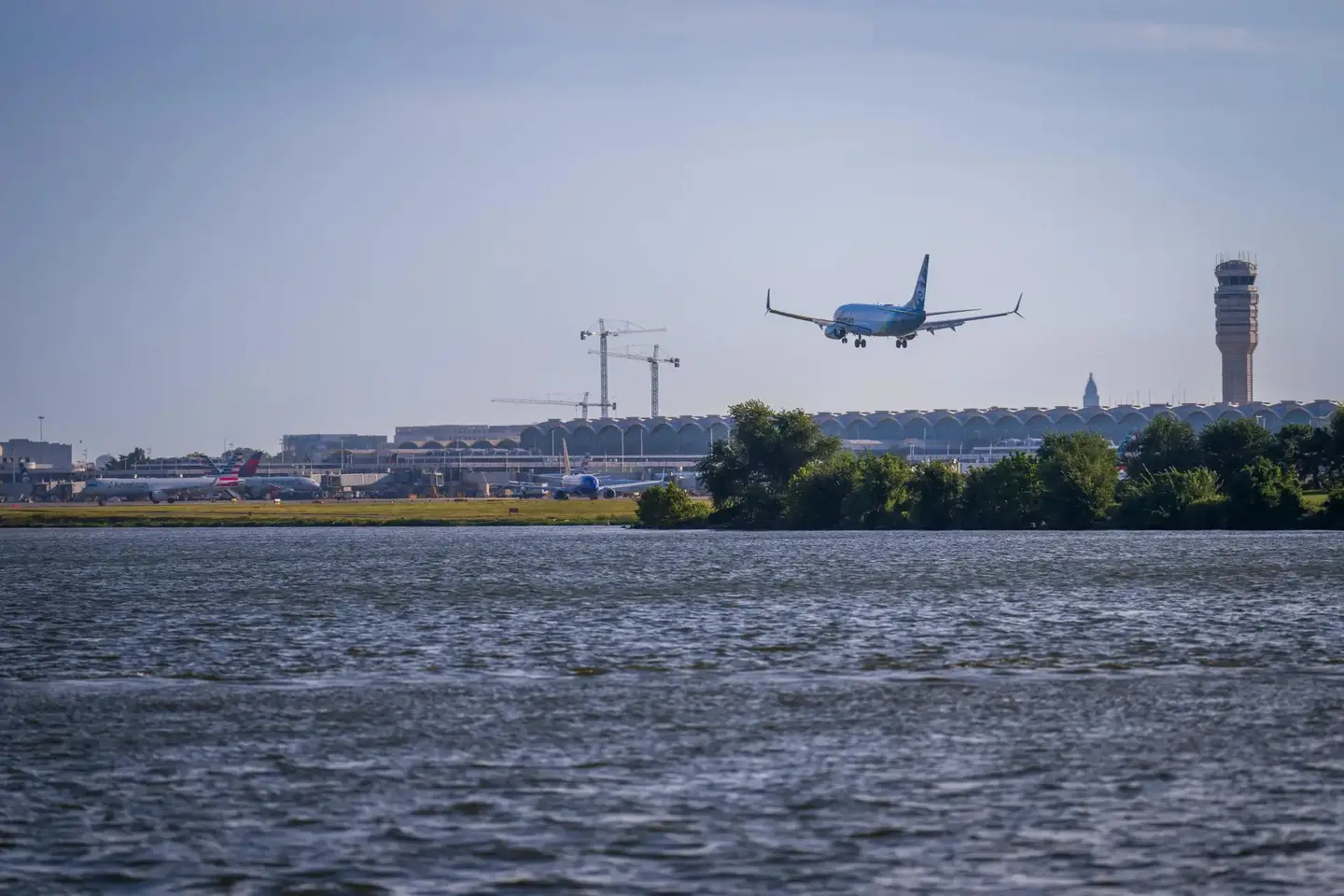Boeing X-66A Mods Begin to Create the Truss-Braced Wing Aircraft
The strutted airplane will be designed to reduce carbon emissions.

Boeing will modify this MD-90 to test the Transonic Truss-Braced Wing configuration as part of NASA’s Sustainable Flight Demonstrator project. [Courtesy: NASA]
In short order Boeing (NYSE:BA) will begin modifications to a McDonnell Douglas MD-90 to test the Transonic Truss-Braced Wing (TTBW) configuration as part of NASA's Sustainable Flight Demonstrator project.
The MD-90 was flown from Victorville to Palmdale, California, where it will undergo “extensive modification” to test TTBW) as part of NASA's undertaking. The aircraft is designated the X-66A.
As reported by FLYING in January, NASA selected Boeing to design an aircraft that is more fuel efficient and can reduce emissions by 30 percent compared to the current most efficient single-aisle airplane in service.
"The X-66A is NASA's first experimental plane focused on helping the U.S. achieve its goal of net-zero aviation greenhouse gas emissions,” Boeing said in a press release. “Modification will begin soon and ground and flight testing is expected to begin in 2028."
Said Todd Citron, Boeing’s chief technology officer: "This marks an important step in the [NASA] Sustainable Flight Demonstrator project, advances Boeing's commitment to sustainability, and brings us closer to testing and validating the TTBW design."
What Makes It Different
The TTBW design has ultra-thin wings braced by struts with larger spans and higher-aspect ratios. Boeing and NASA have collaborated for more than a decade on the concept through the Subsonic Ultra Green Aircraft Research (SUGAR) program.
We're on our way!
— The Boeing Company (@Boeing) August 17, 2023
This MD-90 was ferried to Palmdale for conversion into the X-66A, the flying test article for the Sustainable Flight Demonstrator program.
This groundbreaking work could reduce fuel consumption and emissions up to 30%.
More: https://t.co/b3enw4roSD pic.twitter.com/7XY5xpmjno
"We at NASA are excited to be working with Boeing on the X-66A Sustainable Flight Demonstrator making critical contributions to accelerate aviation toward its 2050 net-zero greenhouse gas emission goal," said Ed Waggoner, deputy associate administrator for programs in the NASA Aeronautics Research Mission Directorate.
Details of the modifications have not been made public.
The TTBW is one of many experimental efforts the aviation industry is using to reduce greenhouse gas emissions.

Sign-up for newsletters & special offers!
Get the latest FLYING stories & special offers delivered directly to your inbox






